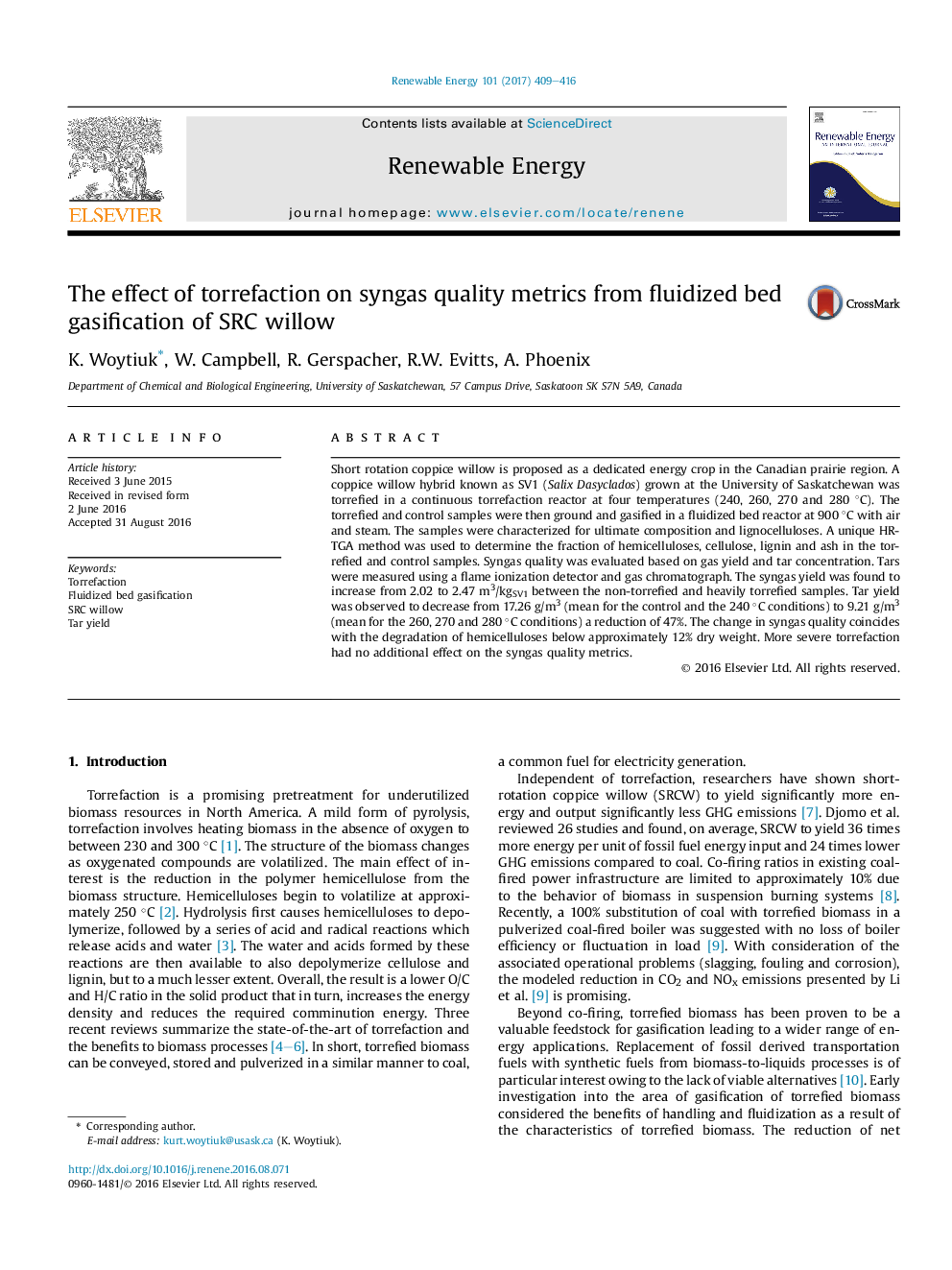| Article ID | Journal | Published Year | Pages | File Type |
|---|---|---|---|---|
| 4926894 | Renewable Energy | 2017 | 8 Pages |
Abstract
Short rotation coppice willow is proposed as a dedicated energy crop in the Canadian prairie region. A coppice willow hybrid known as SV1 (Salix Dasyclados) grown at the University of Saskatchewan was torrefied in a continuous torrefaction reactor at four temperatures (240, 260, 270 and 280 °C). The torrefied and control samples were then ground and gasified in a fluidized bed reactor at 900 °C with air and steam. The samples were characterized for ultimate composition and lignocelluloses. A unique HR-TGA method was used to determine the fraction of hemicelluloses, cellulose, lignin and ash in the torrefied and control samples. Syngas quality was evaluated based on gas yield and tar concentration. Tars were measured using a flame ionization detector and gas chromatograph. The syngas yield was found to increase from 2.02 to 2.47 m3/kgSV1 between the non-torrefied and heavily torrefied samples. Tar yield was observed to decrease from 17.26 g/m3 (mean for the control and the 240 °C conditions) to 9.21 g/m3 (mean for the 260, 270 and 280 °C conditions) a reduction of 47%. The change in syngas quality coincides with the degradation of hemicelluloses below approximately 12% dry weight. More severe torrefaction had no additional effect on the syngas quality metrics.
Related Topics
Physical Sciences and Engineering
Energy
Renewable Energy, Sustainability and the Environment
Authors
K. Woytiuk, W. Campbell, R. Gerspacher, R.W. Evitts, A. Phoenix,
